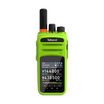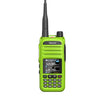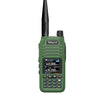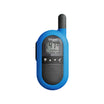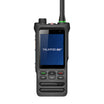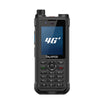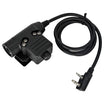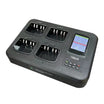What is an Access Point (AP or Wireless AP)?
In the digital age, maintaining seamless connectivity has become a cornerstone of operational efficiency. An Access Point (AP), or Wireless AP, is a critical device within this landscape. It facilitates the connection of wireless devices to a wired network, serving as a conduit or gateway for data transmission. This technology enables devices within its range to join a network, allowing for the exchange of information with other networked devices and access to the internet. In essence, APs extend the reach of a wireless network, making it possible for more users and devices to communicate within a digital environment.
The Integration of Access Points in Two-Way Radio Systems
When it comes to two-way radio systems, the application of Access Points revolutionizes traditional communication frameworks. These systems, pivotal in various sectors for their reliability and directness, gain a new layer of functionality with AP integration. By connecting two-way radios to wireless access points, organizations can significantly extend the operational range of their radios beyond conventional limitations imposed by geography and infrastructure.
The use of APs in two-way radio systems translates into enhanced communication clarity and reliability. Issues like signal interference, which traditionally plague radio communications, especially in densely structured environments like urban centers or large industrial complexes, can be mitigated. Access Points help maintain clear and continuous communication channels, ensuring that critical messages are delivered and received without distortion or loss.
Furthermore, integrating Access Points allows two-way radio systems to bridge communication gaps between various technologies. This interoperability means that traditional radios can seamlessly connect with modern digital devices such as smartphones, tablets, and even networked dispatch systems. This integration fosters a unified communication platform, bolstering operational efficiency and situational responsiveness.
Strategic deployment of Access Points also eradicates communication 'dead zones.' By establishing a network of APs, businesses can ensure comprehensive coverage across their operation sites, allowing personnel to remain in constant communication irrespective of their physical location. This uninterrupted communication network is indispensable for ensuring safety and coordinating large-scale operations.
Lastly, Access Points enable two-way radio systems to support more sophisticated functionalities. Leveraging digital networks, two-way radios can now offer text messaging, real-time GPS tracking, and instant emergency alerts. These features enrich the traditional voice-only radio model, providing users with a multifaceted tool that enhances safety, accountability, and coordination.
Conclusion
The integration of Access Points with two-way radio systems is not just an advancement; it's a transformation, elevating the humble radio into a versatile, multifunctional communication device. By bridging the gap between traditional radio frequencies and modern digital networks, Access Points extend the capabilities, range, and clarity of two-way radios, ensuring that they remain an indispensable tool in our increasingly connected world.





